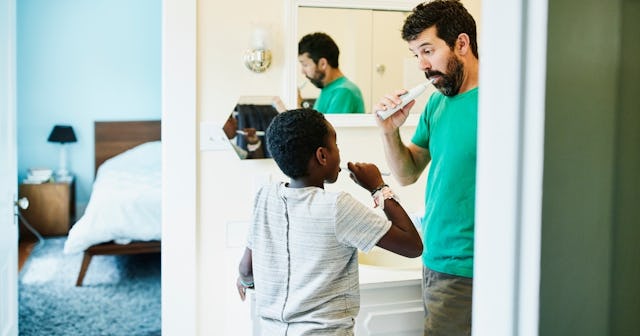What You Need To Know About Transracial Adoption

When it comes to how and why people want to become parents, everyone has different motivations and ideas — including those who are looking to adopt a child. While some would prefer to adopt a child that bears some physical resemblance to them, others simply want to become parents, and a child’s race or ethnicity is not a deciding factor. In situations like these, transracial adoption is an option. Here’s what prospective parents — and everyone else — should know about transracial adoption.
If you’re looking for more info on other types of adoption, you can find our guides to embryo, open, closed, baby, foster care, private, adult, international, step parent, military, single parent, Jewish, Christian, and same-sex adoption.
What is transracial adoption?
Transracial adoption — also sometimes referred to as “interracial adoption” — describes any situation in which a person or family adopts a child of a different race. And though you may not have heard the term before, transracial adoption is relatively common. In fact, a study conducted by the Institute for Family Studies found that 44 percent of the adopted children surveyed were adopted by parents of a different race. People who consider transracial adoption may do so for a number of reasons, including that they want to expand their family regardless of whether or not their adopted child looks like them, want to intentionally create a multicultural household, or would prefer to adopt internationally (though there certainly are domestic transracial adoptions as well).
The adoption process itself — in terms of finding an agency, submitting an application, etc. — is largely the same for transracial adoption. And like any type of adoption, if you’re considering transracial adoption, you’re going to need to do some research first, considering things like whether you want an open or closed adoption, whether you’re willing to start off fostering a child, whether you want to adopt domestically or internationally, and what type of agency is right for you.
What should families thinking about transracial adoption consider?
People considering transracial adoption should also make sure they’re prepared to deal with some of the unique challenges that come along with it. For example, AdoptUSKids has several suggestions for having a successful transracial adoption, including talking with your family and friends about it, finding mentors and role models for your child, acknowledging racism (pretending like it doesn’t exist doesn’t help anyone), making new connections in your community, and considering starting new family traditions.
Along the same lines, Alexis Oberdorfer, a social worker who grew up in a transracial home, suggests that people thinking about transracial adoption seriously consider their answers to the following questions:
- Will your child have other people in the community that look like them or will they be isolated?
- Do you have the ability to see your child as more important than you, enough so as to push you outside of your comfort zone?
- If you do not look like your child, how will you help your child develop positive self-esteem and racial identity?
- What activities do you genuinely engage in as a parent on a daily, weekly, monthly, or yearly basis that reflect your child’s ethnic origin, to help promote a connection?
- Do you have other people that can be adult role models or mentors to your child who are people of color of the same racial or ethnic background as your child?
- What is your knowledge of your child’s ethnic history, and how will you teach it?
- When your child no longer looks like a child and is in the community without you, will they know how to respond to situations that involve micro-aggressions, implicit racial bias, and other forms of racism?
- Will your child develop the capacity and be equipped to code-switch?
How can you foster positive self-esteem and racial identity in a transracial adoption?
You can start preparing to foster a healthy racial identity in your new child before they even arrive. If you know the race of your baby, start doing your research on how people of that race are treated in your society… especially as adults. (In other words: Do you need to have the safety talk?) What holidays from their heritage can you incorporate into your year? Even as a baby, you can incorporate their race and heritage into your baby’s life with books that feature babies and kids from your child’s race.
Moreover, you can look for dolls and other human-centric toys that resemble your baby. They totally exist! However, it’s easy to not think about it and accidentally whitewash your baby’s world. The most important thing to remember in all of this is that no parent is perfect and there’s a good chance you’ll stumble from time to time. As long as you show up ready to learn and teach, you’ll raise a well-adjusted baby whether they look like you or not.
Do transracial adoptions require home studies?
Yes. Home studies are an integral part of nearly all adoptions so knowing what will be expected of you will help you prepare for what’s to come. Unlike what you see in movies (cough Life As We Know It cough) and TV shows, a home study is not just a quick interview with a social worker or agency rep in your living room.
On top of the home visits and interviews, a home study process will require adoptive parents to submit documents detailing their health and income. They will also need to draft autobiographical statements about their life to allow the social worker or agency to get to know them better. The home study will require background checks for members of the household over the age of 16 and three or four reference letters from family members and friends.
This article was originally published on